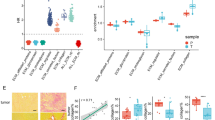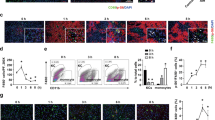Abstract
We constructed the low-expression tissue-specific transplantation antigen P35B (TSTA3) immune response–mediated metabolism coupling cell cycle to postreplication repair network in no-tumor hepatitis/cirrhotic tissues (HBV or HCV infection) compared with high-expression (fold change ≥ 2) human hepatocellular carcinoma in GEO data set, by using integration of gene regulatory network inference method with gene ontology analysis of TSTA3-activated up- and downstream networks. Our results showed TSTA3 upstream–activated CCNB2, CKS1B, ELAVL3, GAS7, NQO1, NTN1, OCRL, PLA2G1B, REG3A, SSTR5, etc. and TSTA3 downstream–activated BAP1, BRCA1, CCL20, MCM2, MS4A2, NTN1, REG1A, TP53I11, VCAN, SLC16A3, etc. in no-tumor hepatitis/cirrhotic tissues. TSTA3-activated network enhanced the regulation of apoptosis, cyclin-dependent protein kinase activity, cell migration, insulin secretion, transcription, cell division, cell proliferation, DNA replication, postreplication repair, cell differentiation, T-cell homeostasis, neutrophil-mediated immunity, neutrophil chemotaxis, interleukin-8 production, inflammatory response, immune response, B-cell activation, humoral immune response, actin filament organization, xenobiotic metabolism, lipid metabolism, phospholipid metabolism, leukotriene biosynthesis, organismal lipid catabolism, phosphatidylcholine metabolism, arachidonic acid secretion, activation of phospholipase A2, deoxyribonucleotide biosynthesis, heterophilic cell adhesion, activation of MAPK activity, signal transduction by p53 class mediator resulting in transcription of p21 class mediator, G-protein-coupled receptor protein signaling pathway, response to toxin, acute-phase response, DNA damage response, intercellular junction assembly, cell communication, and cell recognition, as a result of inducing immune response–mediated metabolism coupling cell cycle to postreplication repair in no-tumor hepatitis/cirrhotic tissues.


Similar content being viewed by others
References
Ming-Ju H, et al. Hepatitis C virus E2 protein induce reactive oxygen species (ROS)-related fibrogenesis in the HSC-T6 hepatic stellate cell line. J Cell Biochem. 2011;112(1):233–43.
Svegliati-Baroni G, et al. Insulin resistance and necroinflammation drives ductular reaction and epithelial-mesenchymal transition in chronic hepatitis C. Gut. 2011;60(1):108–15.
Bauer T, Sprinzl M, Protzer U. Immune control of hepatitis B virus. Dig Dis. 2011;29(4):423–33.
Feng J, et al. Correction: high frequency of CD4CXCR5 TFH cells in patients with immune-active chronic hepatitis B. PLoS ONE. 2011;6(7):e21698.
Feng J, et al. High frequency of CD4+CXCR5+TFH cells in patients with immune-active chronic hepatitis B. PLoS ONE. 2011;6(7):e21698.
Roque-Cuellar MC, et al. Cellular immune responses and occult infection in seronegative heterosexual partners of chronic hepatitis C patients. J Viral Hepat. 2011;18(10):E541–9.
Svicher V, et al. Role of hepatitis B virus genetic barrier in drug-resistance and immune-escape development. Dig Liver Dis. 2011;43(12):975–83.
Tsamandas AC, et al. Oval cell proliferation in cirrhosis in rats. An experimental study. Hepatol Res. 2007;37(9):755–64.
Donato MF, et al. High rates of hepatocellular carcinoma in cirrhotic patients with high liver cell proliferative activity. Hepatology. 2001;34(3):523–8.
Sangiovanni A, et al. Hepatocyte proliferation and risk of hepatocellular carcinoma in cirrhotic patients. Am J Gastroenterol. 2001;96(5):1575–80.
Toda K, et al. Induction of hepatic stellate cell proliferation by LPS-stimulated peripheral blood mononuclear cells from patients with liver cirrhosis. J Gastroenterol. 2000;35(3):214–20.
Delhaye M, et al. Hepatocyte proliferative activity in human liver cirrhosis. J Hepatol. 1999;30(3):461–71.
Borzio M, et al. Hepatocyte proliferation rate is a powerful parameter for predicting hepatocellular carcinoma development in liver cirrhosis. Mol Pathol. 1998;51(2):96–101.
de Paula AM, et al. Cell proliferation markers in the odontogenic keratocyst: effect of inflammation. J Oral Pathol Med. 2000;29(10):477–82.
Yu E, et al. Acute inflammation of the proliferative zone of gastric mucosa in Helicobacter pylori gastritis. Pathol Res Pract. 1999;195(10):689–97.
Chang M. Dual roles of estrogen metabolism in mammary carcinogenesis. BMB Rep. 2011;44(7):423–34.
Gaglio D, et al. Oncogenic K-Ras decouples glucose and glutamine metabolism to support cancer cell growth. Mol Syst Biol. 2011;7:523.
Stieber D, Abdul Rahim SA, Niclou SP, Novel ways to target brain tumour metabolism. Expert Opin Ther Targets. 2011;15(10):1227–39.
Yoshizaki T. A novel immune evasion mechanism of LMP-1, an EBV-primary oncogene, in nasopharyngeal carcinoma. Adv Otorhinolaryngol. 2011;72:157–9.
Alavian S-M, et al. Lipid profiles and hepatitis C viral markers in HCV-infected thalassemic patients. Gut Liver. 2011;5(3):348–55.
Amet T, et al. CD59 incorporation protects hepatitis C virus against complement-mediated destruction. Hepatology. 2012;55(2):354–63.
Doi, H., et al., Dysfunctional B-cell activation in cirrhosis due to hepatitis C infection associated with disappearance of CD27 + B-cell population. Hepatology, 2011.
Bagan JV, et al. Malignant transformation of proliferative verrucous leukoplakia to oral squamous cell carcinoma: A series of 55 cases. Oral Oncol. 2011;47(8):732–5.
Ernst CW, et al. Malignant transformation of an abdominal inflammatory myofibroblastic tumor with distant metastases in a child. Jbr-Btr. 2011;94(2):78–80.
Guck J, et al. Optical deformability as an inherent cell marker for testing malignant transformation and metastatic competence. Biophys J. 2005;88(5):3689–98.
Hritz I, et al. Increased p53 expression in the malignant transformation of Barrett’s esophagus is accompanied by an upward shift of the proliferative compartment. Pathol Oncol Res. 2009;15(2):183–92.
Iyengar B. Expression of proliferating cell nuclear antigen (PCNA): proliferative phase functions and malignant transformation of melanocytes. Melanoma Res. 1994;4(5):293–5.
Katori H, Nozawa A, Tsukuda M. Cell proliferation, apoptosis, and apoptosis inhibition in malignant transformation of sinonasal inverted papilloma. Acta Otolaryngol. 2007;127(5):540–6.
LeMay DR, Bucci MN, Farhat SM. Malignant transformation of recurrent meningioma with pulmonary metastases. Surg Neurol. 1989;31(5):365–8.
Lopez-Jornet P, Alonso FC. Proliferative verrucous leukoplakia and malignant transformation. J Eur Acad Dermatol Venereol. 2008;22(9):1138–9.
Muller PE, et al. Malignant transformation of a benign enchondroma of the hand to secondary chondrosarcoma with isolated pulmonary metastasis. Acta Chir Belg. 2004;104(3):341–4.
Nagai M, et al. Proliferative potential and malignant transformation of ganglioglioma: immunohistochemical studies by MIB-1 and p53 staining. Noshuyo Byori. 1995;12(2):141–9.
You N, et al. Tg737 inhibition results in malignant transformation in fetal liver stem/progenitor cells by promoting cell-cycle progression and differentiation arrest. Mol Carcinog. 2011. doi:10.1002/mc.20839.
Jacobsen EA, et al. Growth, differentiation, and malignant transformation of pre-B cells mediated by inducible activation of v-Abl oncogene. J Immunol. 2006;176(11):6831–8.
Pollett JB, et al. Malignant transformation of multipotent muscle-derived cells by concurrent differentiation signals. Stem Cells. 2007;25(9):2302–11.
Zheng H, et al. Pten and p53 converge on c-Myc to control differentiation, self-renewal, and transformation of normal and neoplastic stem cells in glioblastoma. Cold Spring Harb Symp Quant Biol. 2008;73:427–37.
Ozaki T, et al. Intramedullary spinal cord metastasis following spontaneous malignant transformation from giant cell tumor of bone 16 years after pulmonary metastasis. J Orthop Sci. 2011;16(1):119–24.
Ito H, et al. Identification of ROBO1 as a novel hepatocellular carcinoma antigen and a potential therapeutic and diagnostic target. Clin Cancer Res. 2006;12(11 Pt 1):3257–64.
Storey JD, A direct approach to false discovery rates. J R Stat Soc Ser B. 2002;64:479–98.
Wang L, et al. Survivin (BIRC5) cell cycle computational network in human no-tumor hepatitis/cirrhosis and hepatocellular carcinoma transformation. J Cell Biochem. 2011;112(5):1286–94.
Wang Y, et al. Inferring gene regulatory networks from multiple microarray datasets. Bioinformatics. 2006;22(19):2413–20.
Sun L, et al. Glycogen debranching enzyme 6 (AGL), enolase 1 (ENOSF1), ectonucleotide pyrophosphatase 2 (ENPP2_1), glutathione S-transferase 3 (GSTM3_3) and mannosidase (MAN2B2) metabolism computational network analysis between chimpanzee and human left cerebrum. Cell Biochem Biophys. 2011;61(3):493–505.
Huang J, et al. Interferon α-inducible protein 27 computational network construction and comparison between the frontal cortex of HIV encephalitis (HIVE) and HIVE-control patients. Open Genomics J. 2010; 3(1875-693X): 1–8.
Huang JX, Wang L, Jiang MH. TNFRSF11B computational development network construction and analysis between frontal cortex of HIV encephalitis (HIVE) and HIVE-control patients. J Inflamm (Lond). 2010;7:50.
Sun Y, et al. Secreted phosphoprotein 1 upstream invasive network construction and analysis of lung adenocarcinoma compared with human normal adjacent tissues by integrative biocomputation. Cell Biochem Biophys. 2010;56(2–3):59–71.
Sun Y, Wang L, Lui L. Integrative decomposition procedure and Kappa statistics set up ATF2 ion binding module in malignant pleural mesothelioma (MPM). Front Electr Electron Eng China. 2008;3(4):381–7.
Wang L, Huang J, Jiang M. RRM2 computational phosphoprotein network construction and analysis between no-tumor hepatitis/cirrhotic liver tissues and Human Hepatocellular Carcinoma (HCC). Cell Physiol Biochem. 2010;26(3):303–10.
Wang L, et al. AFP computational secreted network construction and analysis between human hepatocellular carcinoma (HCC) and no-tumor hepatitis/cirrhotic liver tissues. Tumour Biol. 2010;31(5):417–25.
Wang L, et al. FOS proliferating network construction in early colorectal cancer (CRC) based on integrative significant function cluster and inferring analysis. Cancer Invest. 2009;27(8):816–24.
Wang L, et al. Integrative decomposition procedure and Kappa statistics for the distinguished single molecular network construction and analysis. J Biomed Biotechnol. 2009;2009:726–8.
Acknowledgments
This work was supported by the National Natural Science Foundation in China (No. 60871100 and No. 61171114), the Returned Overseas Chinese Scholars for Scientific research Foundation of State Education Ministry, Significant Science and Technology Project for New Transgenic Biological Species (2009ZX08012-001B), Automatical Scientific Planning of Tsinghua University (20111081023 and 20111081010), and State Key Lab of Pattern Recognition Open Foundation.
Author information
Authors and Affiliations
Corresponding author
Additional information
Lin Wang, Juxiang Huang, and Minghu Jiang contributed equally.
Rights and permissions
About this article
Cite this article
Wang, L., Huang, J., Jiang, M. et al. Tissue-specific transplantation antigen P35B (TSTA3) immune response–mediated metabolism coupling cell cycle to postreplication repair network in no-tumor hepatitis/cirrhotic tissues (HBV or HCV infection) by biocomputation. Immunol Res 52, 258–268 (2012). https://doi.org/10.1007/s12026-012-8337-z
Published:
Issue Date:
DOI: https://doi.org/10.1007/s12026-012-8337-z




